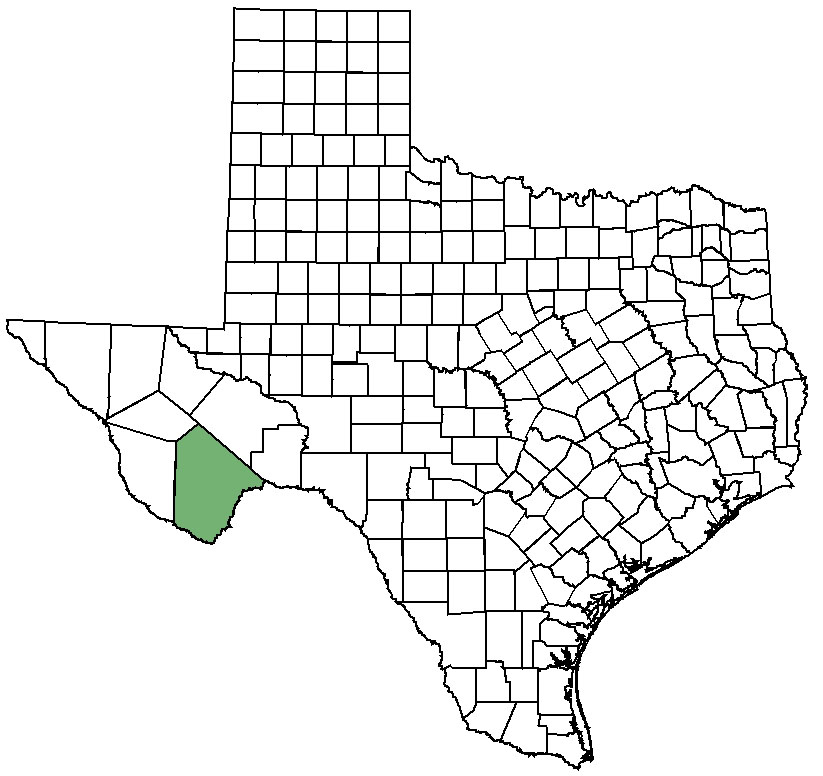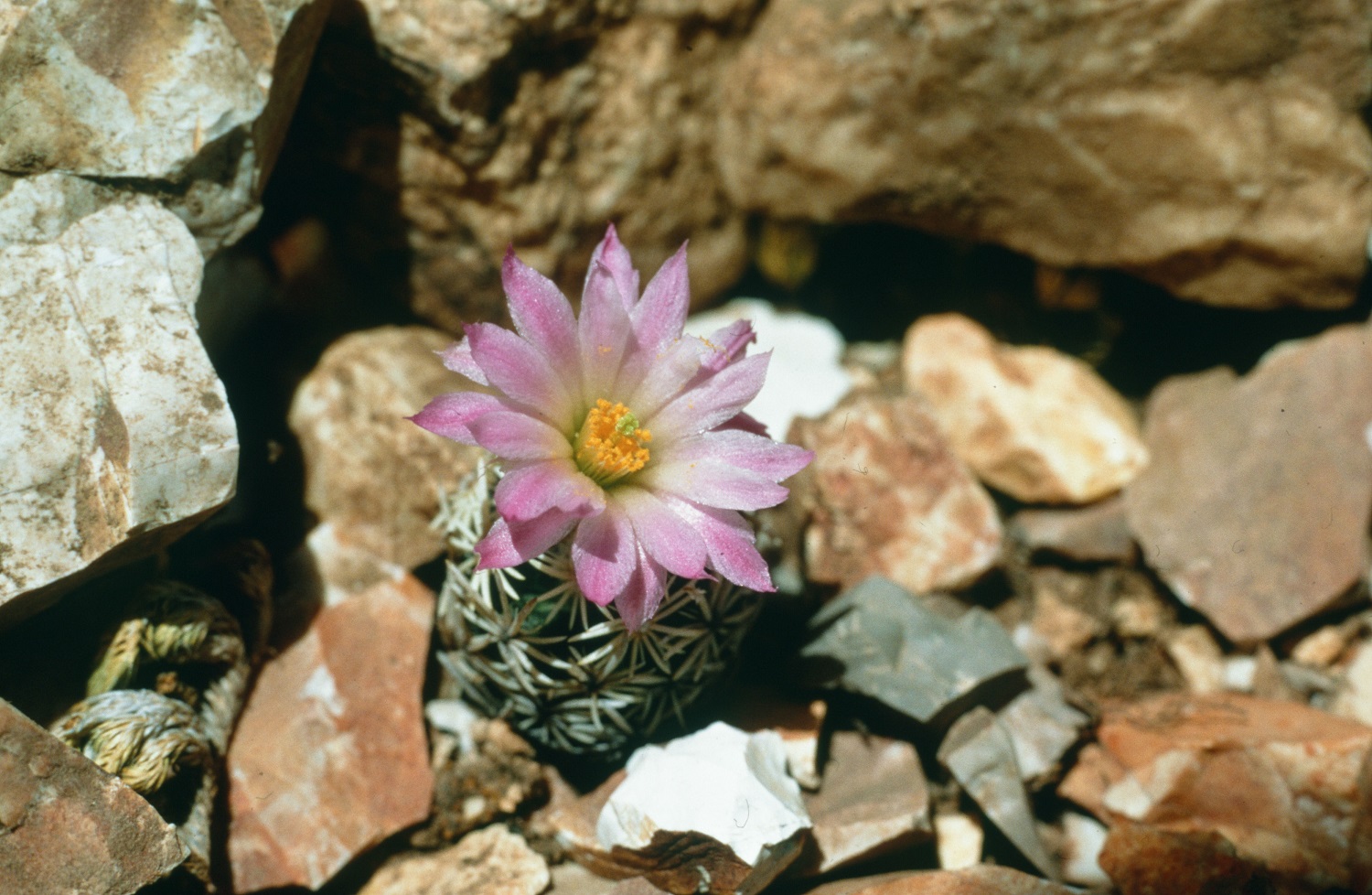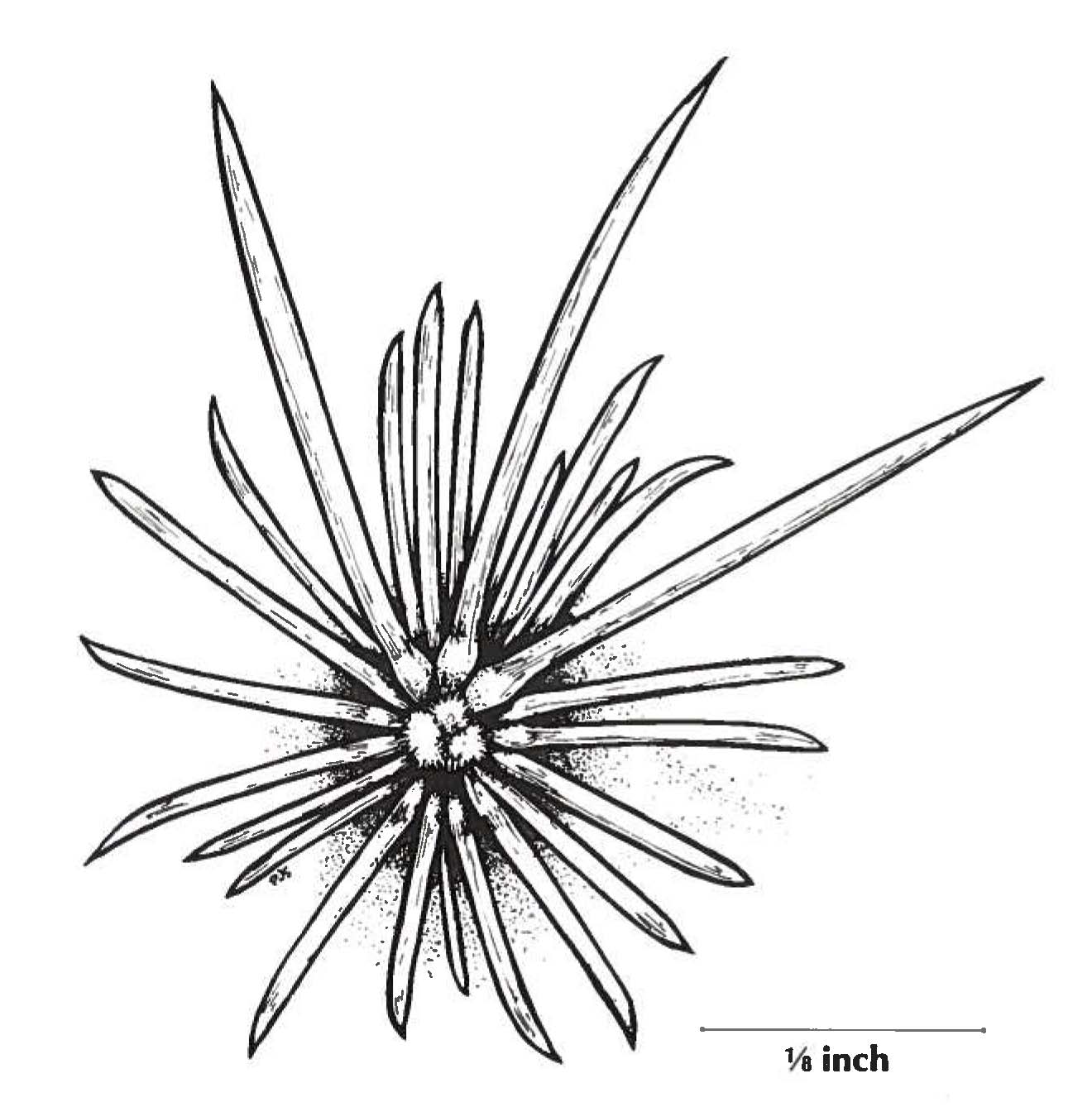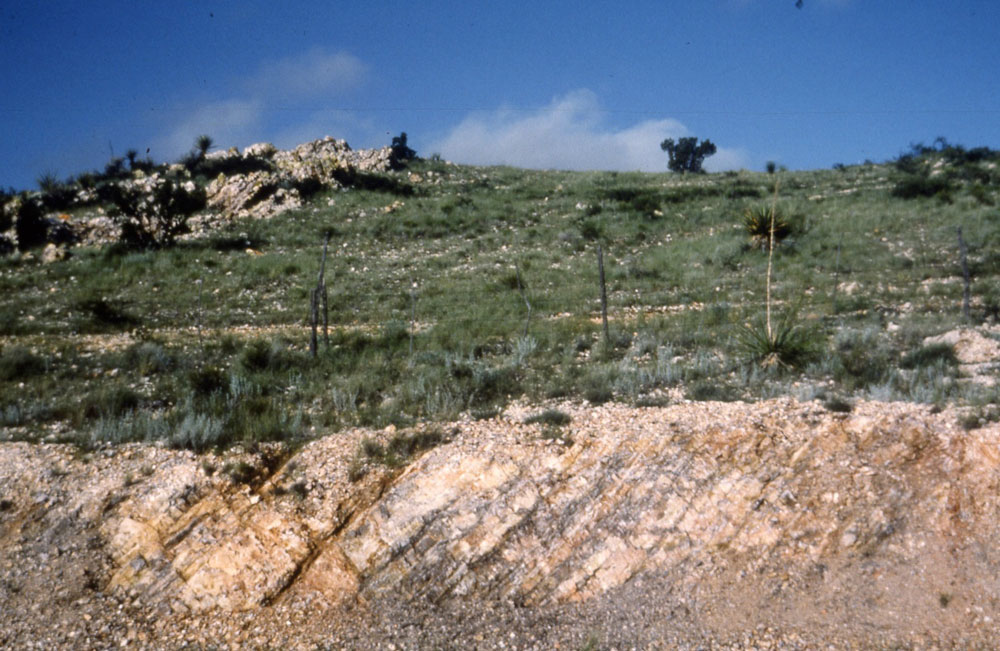Federal and State Listed Species of Texas:
Nellie's cory cactus

Current
null
null
Distribution map of Nellie's cory cactus (Escobaria minima ).
Global Location
Nellie’s cory cactus is only found in a small area of Brewster County in West Texas.
null
Credit:
Description
Nellie's cory cactus is a succulent perennial that occasionally branches and grows to 4 cm tall. The stems are covered in spine-tipped, cone-shaped projections. Unlike most cacti which have needle-like spines, the spines of Nellie’s cory cactus are stout, blunt, and almost peg-like. The spines are so numerous and dense that the stem is completely hidden. Most of the spines (radial spines) form a tight ring around the projection’s tip, point out from the center (like the spokes of a bicycle wheel) and are pressed tightly against the stem. Other spines (central spines) arise interior to the radial spines and point somewhat out from the center. Although at times hard to spot among the 13-24, 3-5 mm long radial spines, the 1-4 central spines extend 4-8 mm and are grouped in the upper part of the spine cluster. The bright pick to fuchsia flowers of Nellie’s cory cactus have a forked, green, staff-like female structure (a stigma), which protrudes centrally from the floral cup. The green fruits are dry at maturity and 1.5-7 mm long. The egg-shaped seeds are very dark brown or black.

The diminutive Nellie's cory cactus has peg-like spines, forked green stigmas, pink flowers, and occurs in a novaculite habitat.
Credit: Dale and Marian Zimmerman

The spines of Nellie's cory cactus are stout, blunt, and almost peg-like. The 13-24 generally shorter radial spines (22 in the illustration) are tightly clustered and pressed against the stem. The 1-4 longer central spines (3 in the illustration) arise interior to the radial spines and are grouped in the upper part of the cluster.
Credit: Patrick Stark - Texas Parks & Wildlife Dept.
null
Credit:
Similar Species
Although the combination of short stature, stout peg-like spines, and chert- or flint-like rock (novaculite) habitat is not seen in any other cacti in Texas, Nellie’s cory cactus most resembles Hester’s pincushion cactus (Escobaria hesteri). However, Hester’s pincushion cactus is taller with needle-like spines and dark brown seeds. Also, the stigmas of Hester’s pincushion cactus are white to cream to pale pink.
Hester's pincushion cactus has needle-like spines and pale pink stigmas (although white and cream stigmas are also common).
Credit: Jackie Poole - Texas Parks & Wildlife Department
null
Credit:
null
Credit:
null
Credit:
null
Credit:
null
Credit:
Floral Characters
nullLeaf Characters
nullnull
Credit:
null
Credit:
null
Credit:
Habitat
Nellie’s cory cactus occurs on exposed areas of chert- or flint-like rock (novaculite) and sometimes in spikemoss mats in Chihuahuan Desert shrublands.

Nellie’s cory cactus habitat.
Credit: Jackie Poole - Texas Parks & Wildlife Department
Life Cycle Events
Flowering occurs March to June and is followed in the next month by fruiting.
Survey Season
Although a perennial and visible year-round, Nellie’s cory cactus is most visible while in flower March to June.
null
Additional Information
- Rare Plants of Texas
- U.S. Fish and Wildlife Service
- NatureServe
- Center for Plant Conservation
- Powell, A. M. and J. F. Weedin. 2004. Cacti of the Trans-Pecos and adjacent areas. Texas Tech University Press. Lubbock, TX.
- Poole, J.M. and G.K. Janssen. 1997. Managing and monitoring rare and endangered plants on highway right-of-ways in Texas. Section 6 final report. Austin: Texas Parks & Wildlife Department.
- Westlund, B.L. 1991. Cactus trade and collection impact study. Section 6 final report. Austin: Texas Parks & Wildlife Department.
Comments
Like many cacti, Nellie’s cory cactus is prone to collection in the wild, although this threat has been alleviated by the increased popularity of cultivated specimens. While Nellie’s cory cactus is the smallest cactus in North America, in cultivation, it often achieves a much larger size.